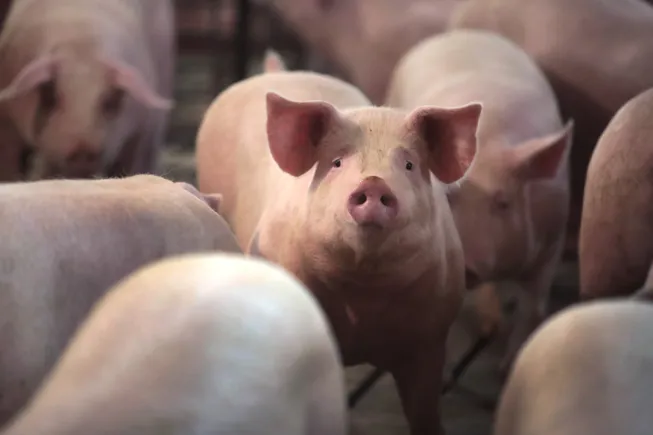Prop 12 offsets ‘big pop’ in pork market, expert says

Dive Brief:
-
Increased exports should alleviate pressures facing the U.S. pork market, experts say, but not by much as declining sales from California’s Prop 12 impacts the broader market.
-
Shipments of loins, butts, hams and other cuts to Mexico, Japan and other global trading partners will grow an estimated 9% this year, said Brett Stuart, founder and president of market research firm Global Agritrends. He cited strengthened competitiveness after a period of swine herd liquidation across Europe.
-
While exports are a bright spot, usually accounting for more than one-fourth of U.S. pork production each year, the Prop 12 animal housing requirement has hurt sales recently in California and forced companies to move product to other states. “We don’t feel that big pop in the market like we should,” Stuart said in terms of pork prices.
Dive Insight:
Pork producers are coming off one of the worst years on record driven by weak consumer demand that has not kept up with high levels of production, keeping prices very low.
Last year, sow slaughter was elevated from May to October, placing pressure on the market, said Dr. Steve Meyers, chief economist for Ever.Ag, a price risk management firm. He attributed the rally to increased herd liquidation from Smithfield Foods in Missouri, where several producers lost their contracts.
Despite a reduction in the breeding herd, Meyers said production has stayed around 100% due to more pigs being saved per litter, which reached an all-time high of 11.53 in March. Producers have been able to effectively offload much of the excess supply thanks to strong export demand.
“Slaughter’s up, weights are going to be up some and yet per-capita availability is down. How’s that work? Well, it’s called exports,” Meyers said during an outlook at the World Pork Expo this week in Des Moines, Iowa.
Pork exports are estimated to reach 7.4 billion pounds, up 9% over last year, according to Global Agritrends data obtained by Agriculture Dive, with Mexico, Japan and South Korea being some of the largest markets for U.S. pork.
In April alone, pork exports soared 14%, according to Agriculture Department data. Meanwhile, poultry exports declined 10% and beef dipped 3%.
The U.S. is also capturing market share from the Caribbean and other global regions that have historically relied on exports from Europe. Countries like Germany and the Netherlands have significantly trimmed their swine herds due to inflation and unfavorable climate policies, Stuart said.
The increase in exports has been a lifeline for pork prices as domestic consumer demand weakens following the implementation of California’s Prop 12 animal housing law at the beginning of the year. The state accounts for 13% of the nation’s pork consumption, but sales have fallen about 20% since January as prices jump, Stuart said.
“It’s become very important to U.S. pricing to have exports growing like this,” he said.
Source: fooddive.com

